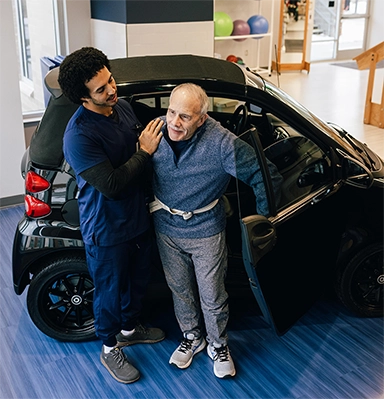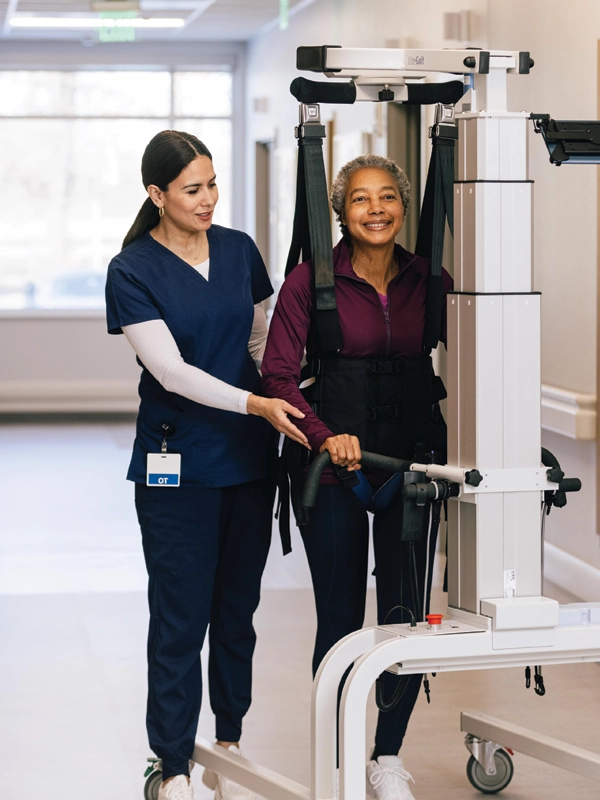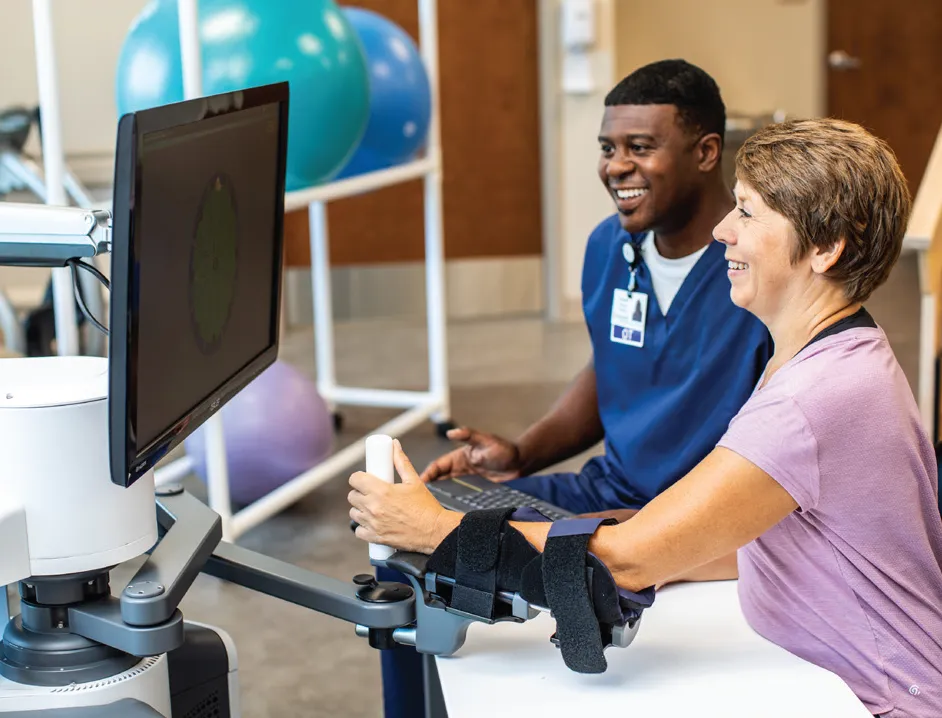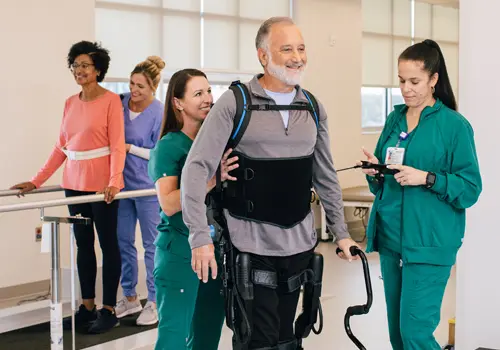Therapeutic Technology
Our hospital provides such leading-edge technology – as well as therapists trained to use it best – to ensure our patients are positioned to recover as quickly as possible.
Innovative Solutions for Superior Outcomes
New technology continues to push the boundaries of what once was considered full recovery from certain injuries or conditions. Today, for instance, top inpatient rehabilitation facilities deploy robotic tools that give stroke patients the ability to use their upper extremities again or help spinal cord injury patients with early ambulation.
Our hospital provides such leading-edge technology – as well as therapists trained to use it best – to ensure our patients are positioned to recover as quickly as possible.
Here are some examples of some of the industry’s best technology deployed at our hospital:
Smart Car
Our Smart Car is fully integrated into our rehab gym, allowing our patients to learn and practice car transfer skills year-round at any time during a treatment session. Car transfer training activities are essential to prepare our patients for community reintegration and setting them up for success when getting back to their daily activities.

LiteGait®
LiteGait® is a body-weight support system and gait training device that provides a safe environment for patients to participate in gait training over a treadmill or over the ground. This system allows patients to begin gait training earlier in the rehabilitation process and at a lower level than would be feasible with any other assistive device available. The LiteGait system eliminates the fear of falling and/or loss of balance with standing and walking tasks and allows the therapist the ability to provide manual assistance to the legs and pelvis throughout the gait cycle to facilitate proper gait patterns.

InMotion
The BIONIK InMotionARM™ Robot is often used with many patients who suffer from weakness in their upper extremities after a stroke. The ARM Robot helps patients utilize their strength to complete hundreds of repetitions in a fraction of the time of traditional exercise. Repetition is one of the most important factors when considering neuroplasticity and the brain’s ability to repair and relearn movements following a stroke. This evidence-based neurorehabilitation technology quietly monitors the patient’s movements during therapy while gently assisting where needed to help them complete various motor therapy activities.

EksoGTTM
The EksoGT™ exoskeletal unit assists patients with early ambulation following a stroke or spinal cord injury. Ekso is a robotic exoskeleton that can be fitted to most patients to allow them to stand and ambulate early in the rehab process, which is key to their long-term prognosis. Clinical evidence indicates that gait training in the Ekso improves patients’ balance, walking distance, and gait speed outside of the device at discharge compared to admission.

RehabTracker
RehabTracker is a groundbreaking person-centered mobile app that is transforming how our partners engage with patients and their families. Combined with our approach of focusing our care around What Matters to You (the patient), RehabTracker allows patients and their invited loved ones to view their personalized goals, see and track their patient progress in real-time as logged by our therapists, including overall progress toward discharge goals, activities of daily living, distance and transfers, share that progress with invited family and friends, share patient photos during their recovery journey, receive comments from staff and messages of support from loved ones – all from the palm of their hands. Areas of patient progress include self-care activities such as bathing, dressing, and eating, mobility activities including walking, transfers, and bed mobility, speech-language activities including expression and comprehension, memory and problem-solving, and diet/swallowing food and liquid consistencies. Facilities utilizing RehabTracker have experienced greater levels of patient motivation as well as patient and family member engagement and satisfaction.
Biodex Balance System
A unique device that can assess nerve-muscle control by gathering information on a person’s ability to maintain balance.
- It measures balance on a firm and movable surface, stability of standing on one or both legs
- Valuable training device to improve movement abilities, especially when the proprioceptive reflex (body’s reaction and reflexes) are impaired after an injury
- It has both testing and training modes for postural stability, fall risk, and limits of stability that allow baseline data to compare as a patient improves
VitalStim® Therapy
Dysphagia is defined as difficulty with swallowing. It can occur as a result of a stroke or other neurological disease, normal aging or after a long period of inactivity. An estimated 15 million adults in the US currently suffer from dysphagia.
In the last few years, new treatment options have become available – especially the use of electrical stimulation. This exciting treatment tool, VitalStim® Therapy, is showing good outcomes in most patients with relatively few treatments. It is simple for certified clinicians to administer and is pain-free for the patient.
Who is a Typical Patient?
Typical patent categories include, but are not limited to:
- Those who experienced a stroke
- De-conditioning as a result of age or co-morbidity
- Head and neck cancer (post-radiation) and/or surgery
- Various neuromuscular disease processes (e.g., Parkinson’s, ALS, etc.)
Am I a Candidate for VitalStim Therapy?
If you show signs of aspiration or have difficulty managing your diet, you may be a candidate for dysphagia therapy. Look for one or more of the following signs and symptoms:
- Coughing/clearing throat after swallowing
- Decreased voice quality (wet, hoarse, weak)
- Multiple swallows or special maneuvers required to clear throat
- A feeling of food being stuck in the throat
- Difficulty initiating a swallow
- Abnormal volitional cough
- Recurring chest infections
- Difficulty completing a meal
- Modified diet required (thickening, pureeing food; soft solids)
- Spilling food or liquid from lips and/or drooling

Low Stimulation Gym
Patients who have experienced a stroke or brain injury can sometimes become overwhelmed in noisy, bright, or busy environments. This “over-stimulation” can negatively affect the patient’s ability to participate in the therapy program and slow recovery. Our rehabilitation facility offers a separate low-stimulation therapy gym for these patients to provide the optimal healing experience.



